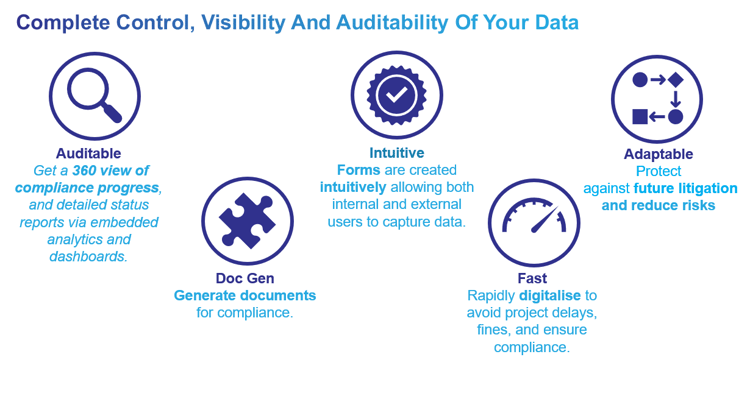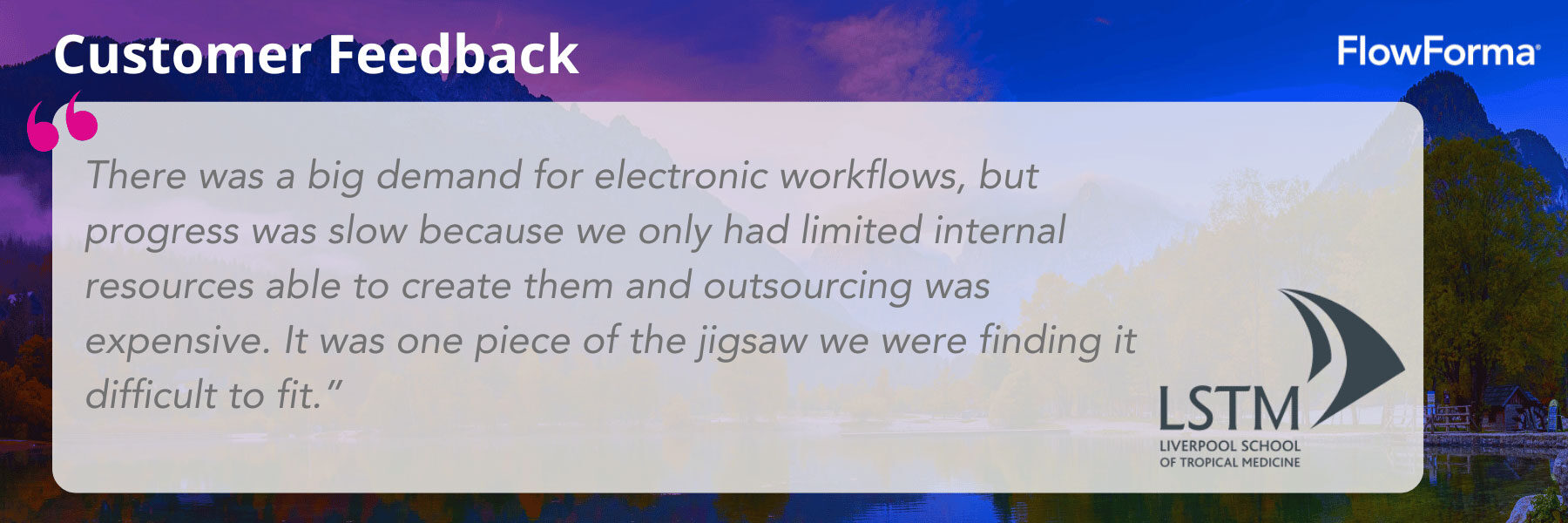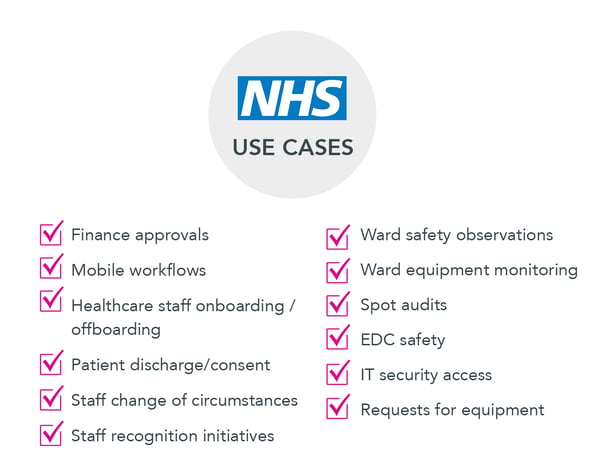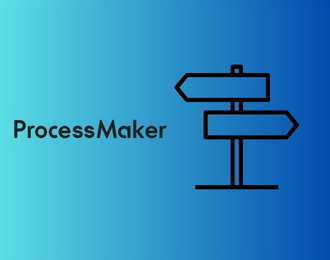Healthcare professionals across the UK face growing pressure from rising patient demand, staff shortages, and complex regulations from the Care Quality Commission (CQC), Information Commissioner’s Office (ICO), and NHS England.
Yet many still rely on paper forms, emails, and spreadsheets. The result is inefficiency, compliance gaps, and a loss of time dedicated to patient care.
Business Process Management (BPM) addresses these challenges. By digitising workflows and embedding compliance into everyday tasks, BPM helps staff focus on care delivery while meeting regulatory standards.
This guide explains what BPM in healthcare is, why it matters, its benefits, use cases, and the features that make platforms like FlowForma a trusted partner for the healthcare industry.
What is BPM in Healthcare?
Business Process Management (BPM) in healthcare is the discipline of designing, digitising, and improving workflows across both clinical and administrative settings.
Rather than sporadic digitisation projects, BPM delivers structured, auditable, and repeatable processes that support better patient outcomes and more efficient healthcare operations.

What does BPM in healthcare include?
At its core, healthcare business process management involves:
- Process design and mapping – breaking down patient admissions, referrals, or audits into clear, standardised steps.
- Workflow automation – removing manual bottlenecks by digitising handoffs, validations, and task allocation.
- Data integration – linking information across existing systems such as electronic health records (EHRs) and finance tools.
- Continuous improvement – using analytics to track performance and refine processes.
Key Benefits of BPM in Healthcare

Key Benefits of BPM in Healthcare
Key reasons why BPM is critical in healthcare include:
1. Improved operational efficiency
Manual, paper-heavy healthcare processes create bottlenecks and delay care delivery. BPM digitises and standardises workflows, helping hospitals cut waiting times, streamline referrals, and free staff from repetitive administrative tasks.
2. Improved patient outcomes
One of the most significant benefits of BPM in healthcare is its direct impact on patient outcomes. When clinical and administrative workflows are digitised and standardised, errors are reduced, care delivery is faster, and decision-making is based on accurate, up-to-date information.
For example, automating safety and compliance reporting enables hospitals to identify risks earlier, resulting in safer care environments and fewer adverse incidents.
2. Data management and compliance
Compliance is fundamental in healthcare. A reliable BPM software provides an in-built compliance module with automated audit trails, data security, and process standardisation.
It helps providers meet UK GDPR, Data Protection Act 2018, and NHS DSP Toolkit requirements while simplifying Care Quality Commission (CQC) inspections.

Features of FlowForma’s compliance module
By standardising processes and encrypting communications, BPM ensures data integrity and confidentiality. Healthcare organisations can demonstrate compliance effortlessly and align with NHS cybersecurity and information governance standards.
4. Automation of routine tasks
From appointment reminders to claims validation, BPM automates repetitive processes that consume valuable time in both clinical and administrative settings. This not only speeds up operations but also reduces the risk of human error in high-volume tasks.
5. Support for multiple stakeholders
BPM improves coordination between multiple stakeholders involved in a patient’s care—from clinicians and administrators to regulators and community services.
It ensures that processes involving various stakeholders remain transparent, consistent, and accountable by providing clear task allocation, escalation paths, and real-time visibility.
6. Cost savings
BPM reduces hidden costs associated with paperwork, errors, and inefficient resource allocation. However, many BPM tools have opaque pricing, which can make broad rollouts prohibitively expensive.
FlowForma’s process-based pricing model provides healthcare teams with cost predictability, eliminating hidden fees and supporting long-term adoption across multiple departments.
Examples of Business Processes in Healthcare (BPM Use Cases)
From medical records management to simplifying overall business operations, here are a few use cases of BPM in healthcare:
1. Patient onboarding
Onboarding often involves collecting patient demographics, medical history, and consent forms. When done manually, this process creates delays and risks losing information between departments. BPM digitises these steps, ensuring complete and accurate records flow seamlessly into electronic systems.
FlowForma enables customers to streamline the entire intake process, reduce waiting times, and enhance coordination between departments.
Watch this demo to learn more:
2. Appointment scheduling
The NHS loses around £1.2 billion annually due to missed outpatient appointments, with millions of slots going unused each year.
Business Process Management (BPM) can help tackle this issue by automating patient scheduling workflows.
Systems can send automated reminders via SMS or email, allow patients to cancel or reschedule appointments in real-time, and instantly reallocate freed-up slots to others on waiting lists. This improves clinic utilisation, reduces costly no-shows, and ensures patients receive care without unnecessary delays.
FlowForma provides a practical example with its automated patient scheduling demo. Healthcare providers can configure processes in days rather than months, embedding reminders, escalation rules, and reporting into one digital flow.
3. Claims and billing
Errors in claims processing delay payments and undermine revenue cycle management. BPM standardises claim submissions, validates codes, and flags anomalies early. Private providers see faster insurance settlements; NHS trusts benefit from cleaner reporting to commissioners.
Suggested read: Healthcare claims automation
4. Referral management
Referrals often stall due to missing information or misrouted requests. With BPM, a standardised referral template ensures completeness and automates routing based on urgency and specialty.
At Blackpool Teaching Hospitals, this approach improved referral turnaround times and provided transparent audit trails for governance purposes.
5. Inventory and asset management
Shortages of medical supplies compromise patient safety. BPM digitises supply chains with automated reordering thresholds, approvals, and tracking.
A hospital pharmacy can automatically trigger replenishment when stock dips, ensuring availability and compliance with procurement rules.
See more in FlowForma’s healthcare inventory management blog
6. Regulatory compliance and safety reporting
NHS hospitals must consistently log infection control incidents, medication errors, and health & safety observations. Traditionally, these records are captured on paper or spreadsheets, leaving room for gaps, inconsistencies, and delays in reporting.
Business Process Management (BPM) transforms this process by digitising incident reports, embedding compliance rules, and generating instant audit trails.
For instance, Beaumont Hospital in Ireland implemented FlowForma to digitise its clinical audit and compliance processes. By moving away from manual, paper-heavy systems, Beaumont reduced administrative workload and provided audit-ready reporting that supported both internal governance and external inspections.
Beaumont Hospital and FlowForma: Complete Webinar
7. Patient feedback and experience
Patient satisfaction is a key priority for the NHS. BPM enables real-time collection and routing of feedback for faster resolution. For instance, feedback forms can be automatically triggered post-discharge, routed to patient experience teams, and escalated if complaints are flagged.
FlowForma’s automated patient feedback demo showcases how digital processes turn feedback into actionable improvement data.
💡Case Study in Focus: Implementing BPM in Blackpool Teaching Hospitals
Blackpool Teaching Hospitals' success story with FlowForma
Blackpool Teaching Hospitals faced inefficiencies due to paper-based and email-dependent processes, which caused delays, incomplete workflows, and staff frustration. To modernise, they adopted FlowForma Process Automation, a no-code tool approved for NHS N365 shared tenancy.
Since implementation, the Trust has automated over 70 processes, ranging from simple accommodation requests to complex ESR (Electronic Staff Record) assignment changes spanning five departments.
Read the entire case study here.

Customer feedback for FlowForma
Features of a BPM System That Improve Healthcare Management
When selecting a BPM platform, healthcare leaders should focus on features that directly contribute to safer patient care, stronger compliance, and the ability to scale digital transformation across multiple sites.
Not all business process management software is designed with healthcare in mind; therefore, it is essential to evaluate systems carefully.
Below are the key capabilities a BPM solution should provide and how FlowForma delivers them in practice.
1. No-code workflow design
A BPM system should allow non-technical staff to design and adapt workflows without relying on scarce IT resources. This empowers clinicians, administrators, and compliance managers to configure processes themselves.

FlowForma’s no-code process automation tool
FlowForma provides a no-code interface that enables “citizen developers” to build end-to-end workflows safely. For instance, a compliance officer can digitise a CQC inspection checklist within days rather than waiting weeks for IT. IT teams still retain governance controls to safeguard data and standards.
2. Secure data and compliance controls
With healthcare organisations operating under strict frameworks such as GDPR and CQC standards, a BPM system must include role-based permissions, data encryption, and audit-ready reporting.
With FlowForma, the data is stored within the client’s own SharePoint tenancy to ensure complete security. In addition, the tool generates secure, time-stamped logs for every workflow action, making governance evidence readily available for inspections or audits.
3. Document generation
Healthcare organisations produce a high volume of documentation, from discharge summaries to regulatory reports. A BPM system should be able to auto-generate these documents from captured data, ensuring consistency and reducing clerical workload.
With FlowForma’s document generation feature, staff can automatically create reports, letters, and forms using structured workflow data. This saves hours for clinical staff and reduces the risk of human error.
4. AI-powered features
Leading BPM systems are now enhanced with artificial intelligence to accelerate design, improve accuracy, and support decision-making. FlowForma’s AI Suite integrates intelligence into every step of healthcare workflows:
- AI Copilot: Build workflows by describing them in natural language or uploading forms/diagrams. For example, a trust can upload a patient referral form and instantly generate a referral workflow skeleton.

Try the FlowForma playground for NHS to design workflows using Copilot
- Discovery Agent: Capture processes directly from workshops, whiteboards, or conversations. For example, an NHS care pathway meeting can be transcribed into a ready-to-review workflow, eliminating weeks of documentation.
- AI Agent Rules: Automate document handling. In claims processing, the agent can extract invoice data, validate it, and return results into the system, reducing rejected claims.
- Smart Assistants: Provide contextual help. For clinicians, an assistant can guide form-filling (“Submit a medication incident”), while for builders, it suggests rules or missing logic.
- Summarisation: Generate clear, natural-language synopses of workflow progress. During a CQC audit, a summarisation agent can instantly produce a report of safety inspections, decisions, and anomalies.
- FlowAssure: AI agents for vendor management
5. Mobile and cloud-first access
Healthcare staff often move between wards, community clinics, and patient homes. FlowForma’s secure cloud platform and mobile app enable staff to log incidents, complete forms, and approve requests in real time—whether they’re on-site, in the community, or working remotely.
6. Seamless integrations
FlowForma integrates with Microsoft 365, SharePoint, and over 1,000 other systems, including your existing EHR systems. Whether you're managing onboarding, tracking patient data, or coordinating between departments, FlowForma ensures all systems work in harmony.
Building on Microsoft 365: LSTM’s Journey to Paperless Processes

Customer feedback from Liverpool School of Tropical Medicine
The Liverpool School of Tropical Medicine adopted FlowForma Process Automation to replace paper-heavy processes and strengthen compliance.
As a cloud-first organisation, LSTM built its IT environment on Microsoft technologies, including Office 365 and SharePoint Online. FlowForma’s tight integration with SharePoint made it the missing piece of their digital strategy, enabling staff to build and launch electronic workflows rapidly.
Within 14 months, 65 workflows went live, driving efficiency, reducing paper trails, and maximising LSTM’s existing Microsoft investment.
Achieve operational excellence in healthcare with FlowForma

Top healthcare use cases for automation
Business Process Management is no longer optional for healthcare institutions aiming to deliver safe, efficient, and compliant care.
By digitising manual processes, embedding governance into every workflow, and making automation accessible to staff without coding skills, BPM creates measurable value across hospitals and trusts.
FlowForma’s combination of no-code design, process-based pricing, and AI-powered features makes it an ideal choice for healthcare organisations. If you’re ready to explore BPM for your organisation, start with FlowForma’s free trial.
.png) By
By 




